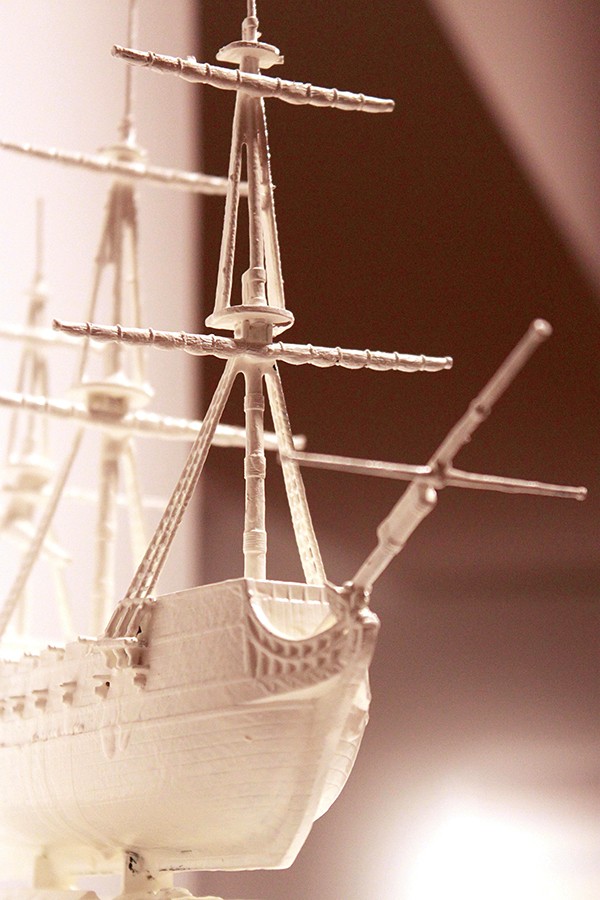“I Thought I Might Find You Here” by Brian Pera at Rhodes Clough-Hanson Gallery
Early in the year, filmmaker and author Brian Pera showed a series of sculptures made in the wake of a friend’s suicide. Pera used colorful yarn, wood, and other oddments to create a show that managed both warmth and solemnity. Pera included video, a slideshow, and a small booklet of photographs to further explore loss. What resulted was moving and brave work. — Eileen Townsend
“Lance Turner: Crosstown Studio Residency Exhibition” at Crosstown Arts
To explore the concept of endlessness, Lance Turner created a series of symmetrical, dizzying abstractions in a back room at Crosstown Arts. He repeated his strange murals until they covered the walls of the space and then built a series of models that echoed those murals, ad infinitum. Turner also showed excellent work this year at GLITCH, a Midtown house gallery and venue. He is perhaps best known for his downtown mural of late punk rocker Jay Reatard, whose image he painted in grey pixels on the side of a South Main business. — ET

Lester Merriweather’s “WHITE(S) ONLY”
“WHITE(S) ONLY” by Lester Merriweather at University of Memphis’ Fogelman Galleries
Merriweather’s exhibition, which consisted of all white objects, was hosted in a gallery with glass doors, white walls, white columns, and overhead spot lighting. The main focus was on a series of oversized paint swatches in degrees of white, with their corresponding names printed on them. Real product names like “Colonial White” and “Fresh Cotton,” provided a pointed commentary on the country’s past. Accompanying the swatches were objects covered in white, such as an old church with a steeple, an old washboard, a miniature ship with masts, and an American flag. The starkness of the room and the blankness of the items in it allowed viewers to focus on the textures and iterations of overwhelming whiteness, in many senses of the word, and what it feels like to exist in that space. — Elle Perry
“Mi Sur/My South,” group exhibition at Crosstown Arts
This exhibition represented Caritas Village-based Centro Cultural’s latest annual survey of Latino/a artists in Memphis. The exhibition featured more established, as well as emerging artists. Many of the pieces dealt with identity and the dualism that can come with being Latino/a in the United States, and, more specifically, Memphis. The show included work by artists who immigrated to the United States as well as those who grew up here. A broad range of both sculptural and two-dimensional work was included. — EP
“A Kind of Confession,” group exhibition at the Metal Museum
In another exhibition focusing on group and individual identity, the Metal Museum’s “A Kind of Confession” featured metalwork from 11 black artists at a range of career points from around the U.S. It explored culture and race in America through the lens of history, socioeconomic status, gender, and current events. Some pieces offered a nostalgic, often humorous slice of black life, while others offered social critiques of both contemporary black and American culture. — EP
“Meet Me Where I’m At” by Johnathan Robert Payne at Crosstown Arts
Payne paired his meticulous, methodical drawings with an hour-long performance, which was equally methodical: He spent an hour doing a Tae-Bo workout video and then, in a vulnerable gesture, bathed in front of a small audience. Payne’s show approached themes of loneliness and desire. It made us uncomfortable and made us think. — ET